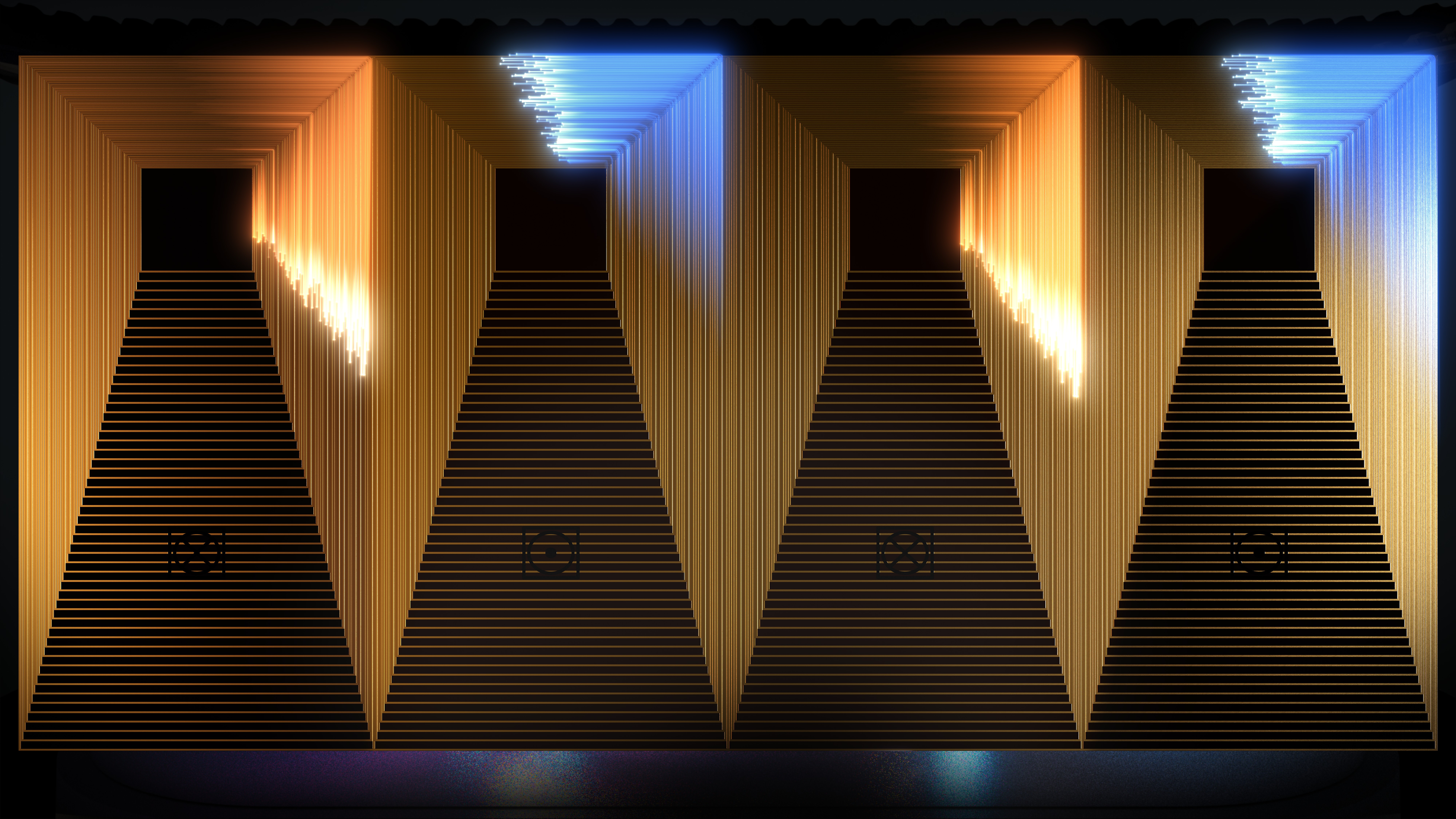Best DACs 2025: USB, desktop and portable digital-to-analogue converters
Give your phone, laptop or hi-fi system the audio boost it probably needs
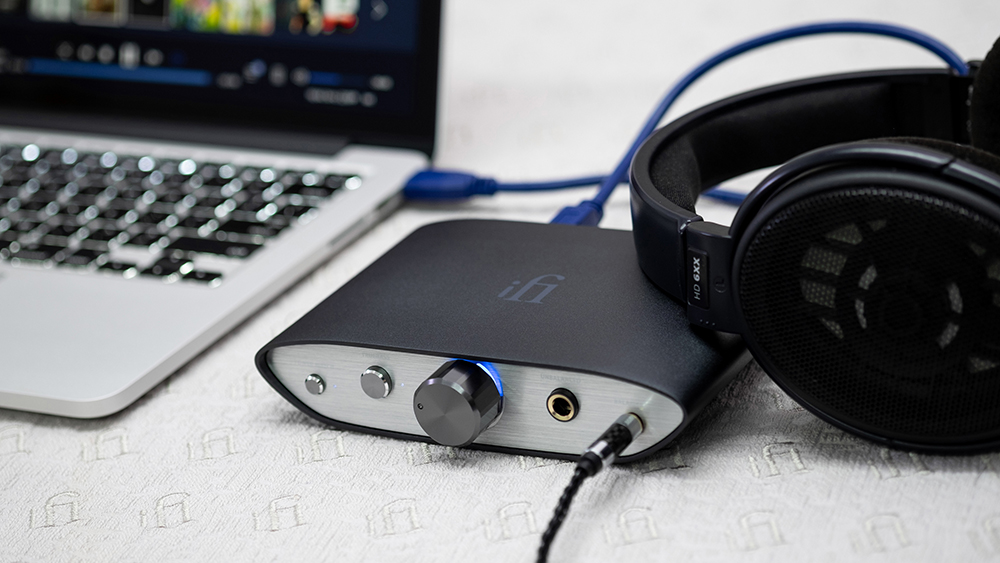
While it is hardly a part of everyday language, a 'DAC' (digital-to-analogue converter) is a part of our everyday life – you probably use one every day, perhaps without even realising it. You see, any device that delivers digital sound – be that your phone, laptop, games console or portable music player – has a DAC built into it.
This tiny chip converts the digital audio that device is playing to an analogue signal that can be read by speakers, headphones or any other audio-outputting analogue device. (Want to know more? Head on over to our comprehensive What is a DAC explainer.)
Now that Spotify and other music streaming services dominate our listening habits, digital audio is everywhere – and, consequently, so are DACs. But while they are a necessary piece of the digital music playback puzzle, those inside everyday devices don't typically perform their conversion duties all that accurately and without negatively impacting sound quality.
That is where the external dedicated DAC comes in. These DACs, which slot in between your source and headphones/speaker in the music chain, are solely committed to their conversion job, without any other tasks to distract them, and therefore fly the flag for sound-first performance.
Below are the best of the best DACs you can buy, spanning portable, desktop and hi-fi options that will make the most of your wired headphones or digital hi-fi system. We at What Hi-Fi? pride ourselves on how we test DACs – our experienced, expert reviews team tests every corner of the market and always reviews newcomers against the current class leaders stored in our brimming stockroom.
The quick list
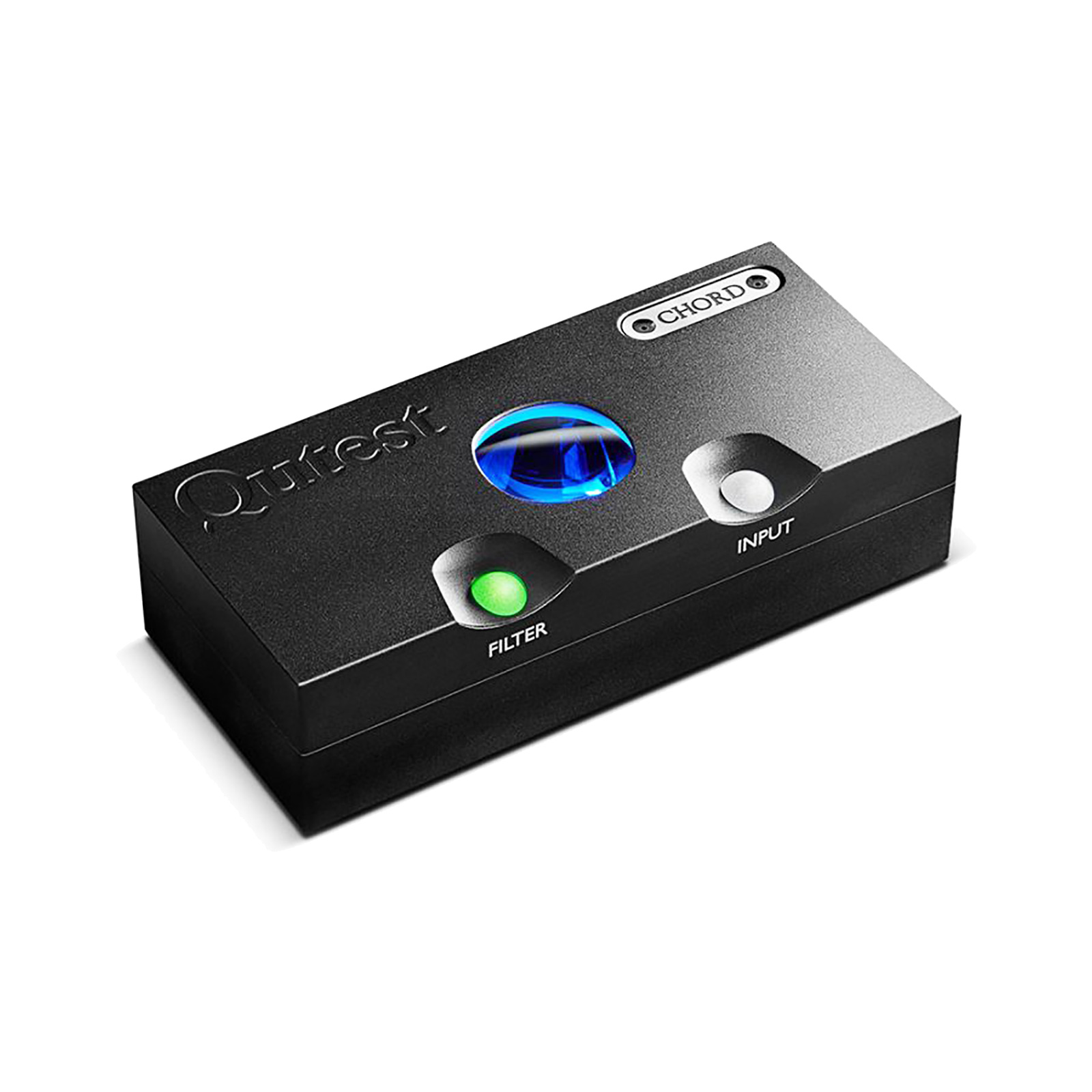
With no headphone amplifier onboard, the multi-award-winning Qutest is the ideal bridge solely between your digital source and amplifier.
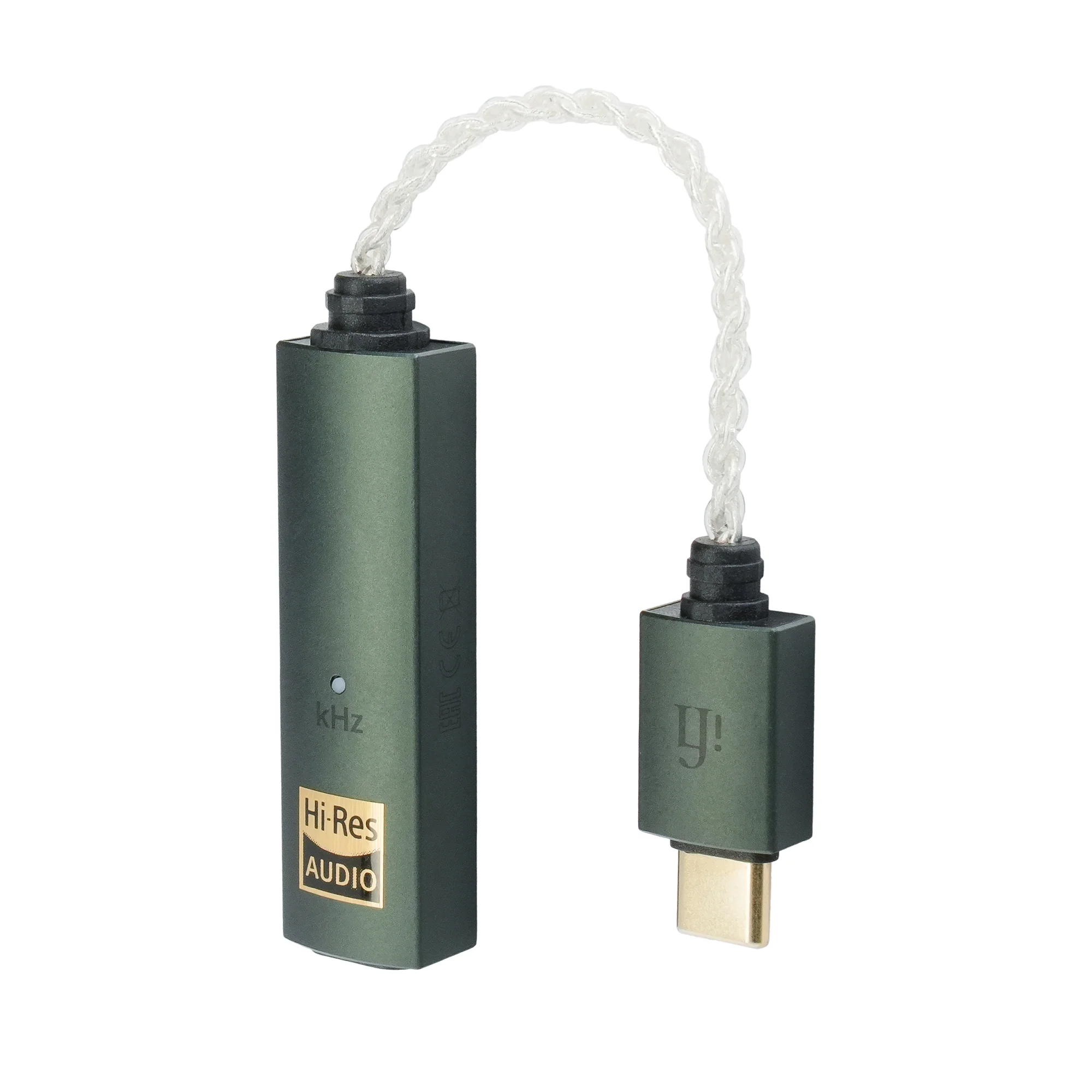
iFi’s tiny and affordable DAC offers impressive portability and performance for your phone or laptop.
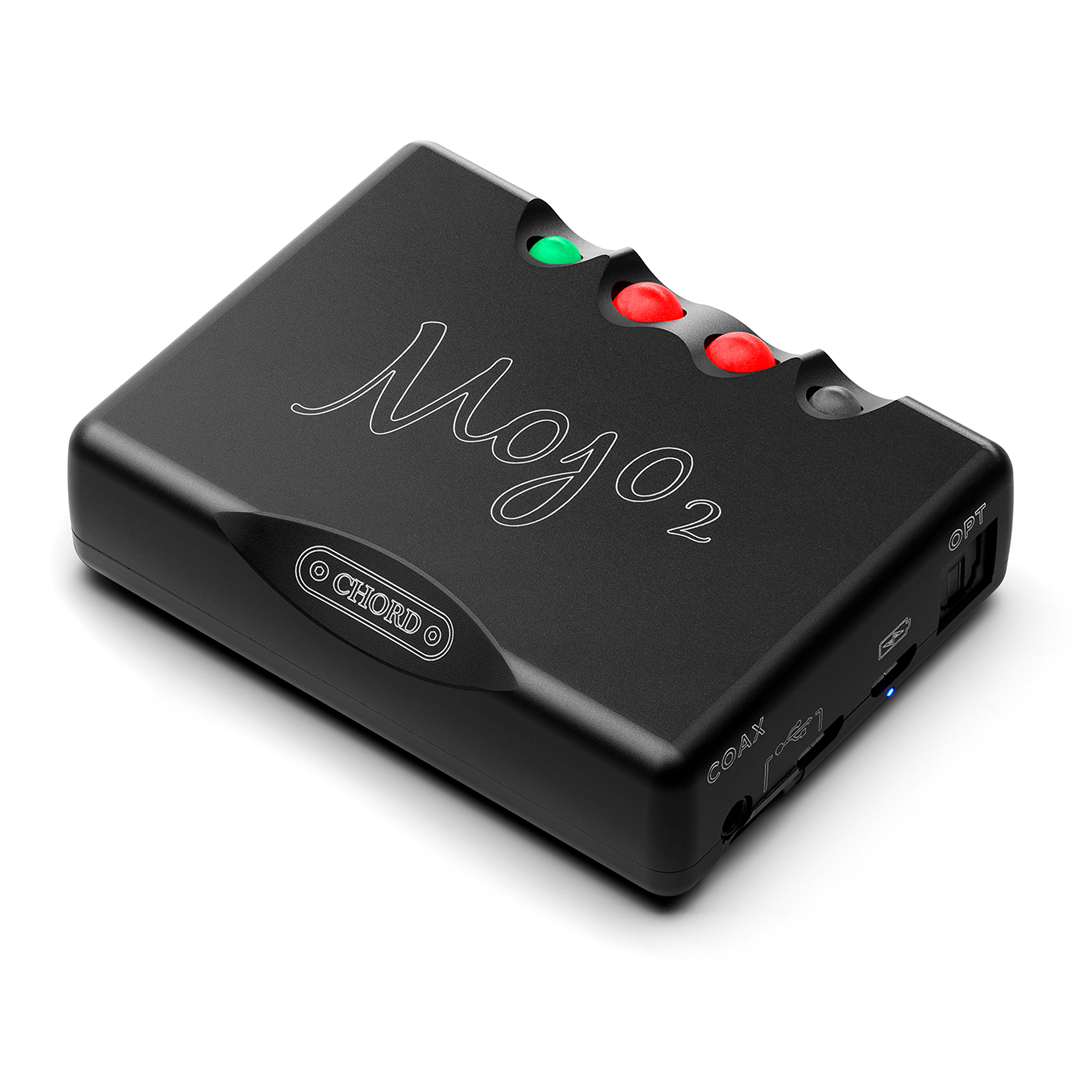
Chord’s quirky, palm-sized and portable (battery-powered) DAC will help any device find its audio mojo.
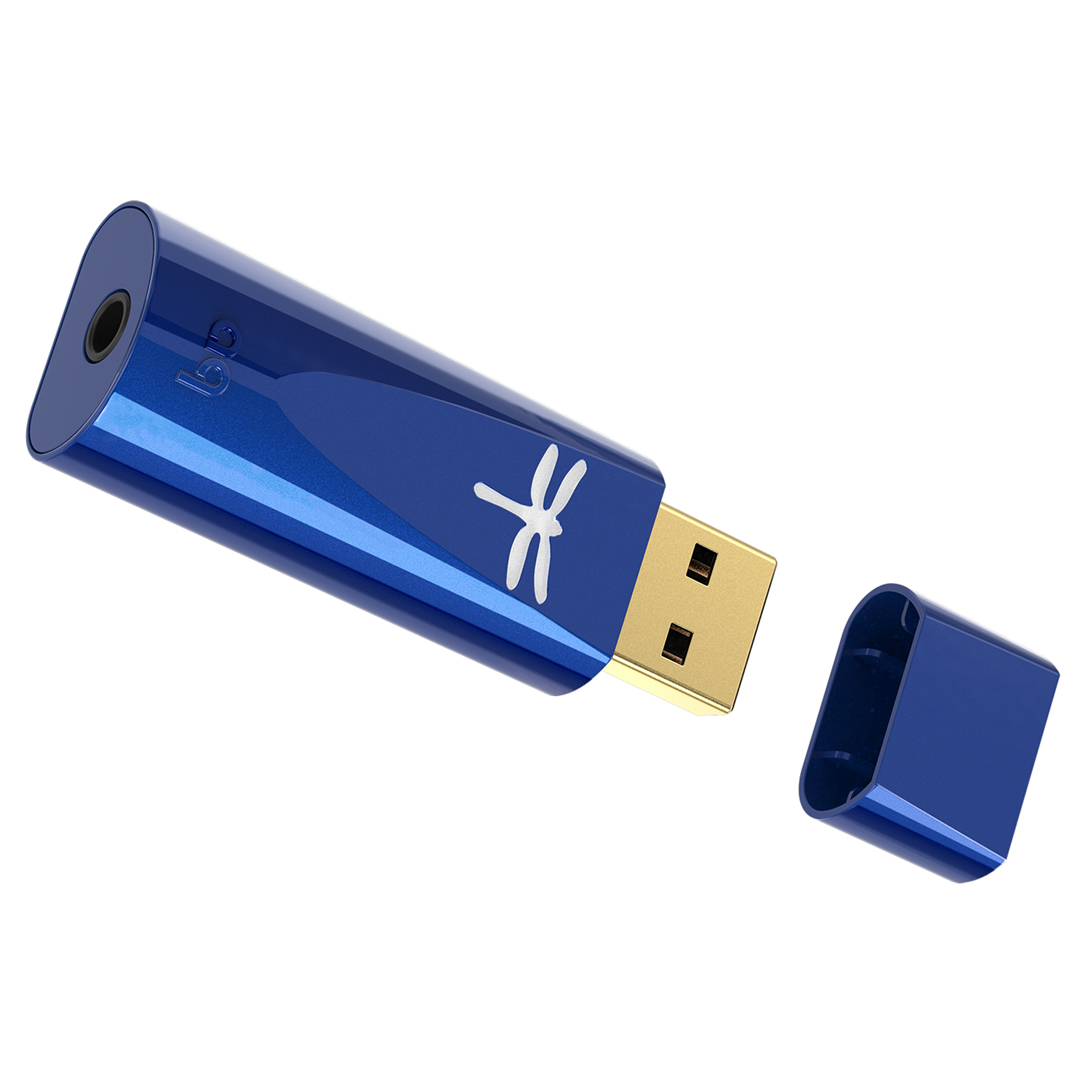
The sound produced by this dinky USB DAC far outweighs its dimensions, making it perfect for your laptop or phone.
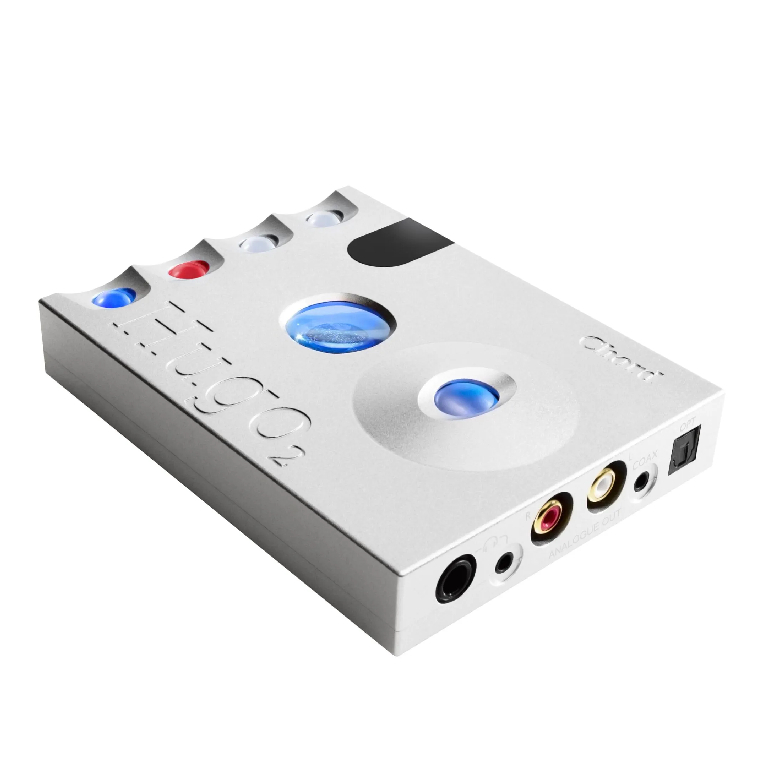
Chord’s Hugo 2 is certainly eye-catching, but its detailed and dynamic performance makes it a treat for the ears too.
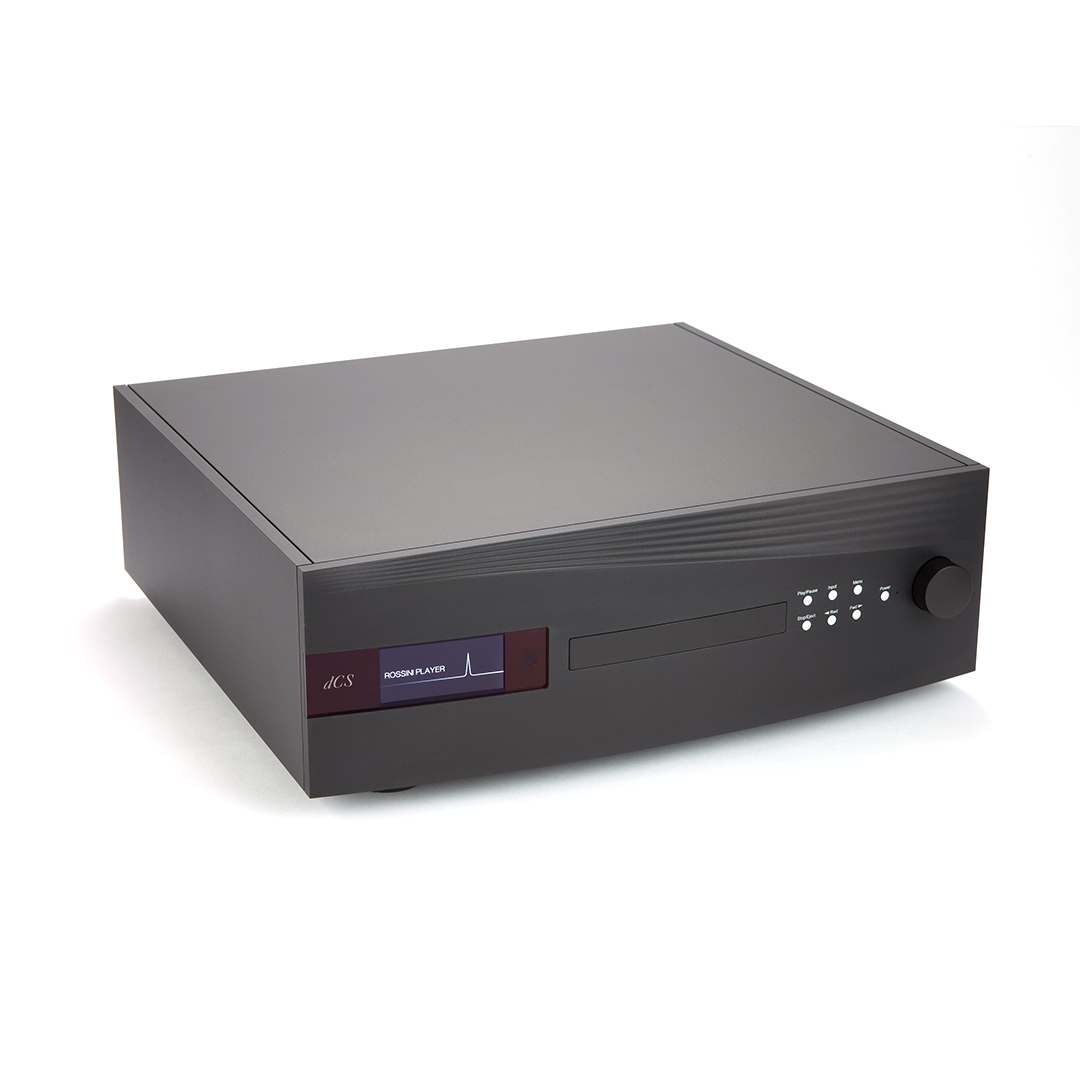
With outstanding detail and dynamic expression, it’s difficult to imagine how this DAC could possibly be better – which is just as well considering it costs more than a small car.

I'm the managing editor of What Hi-Fi? and have been testing hi-fi and audio products for over a decade – including every kind of digital-to-analogue converter out there. I'm a self-professed headphones fan and spend a lot of time either at my desk or travelling, so desktop and portable DACs are my most used and valued audio components. If your listening habits are similar to mine, a DAC could be your music purchase of the year. My picks below have something for everyone, varying in use-case design and budget, but all six share one thing in common: class-leading performance at their respective prices.
May 2025: Nothing has arrived in recent weeks to trouble the class leaders in this list, although we look forward to getting the just-announced Audiolab D7 and D9 DACs into our test rooms as they replace the acclaimed M-DAC.
The best hi-fi DAC


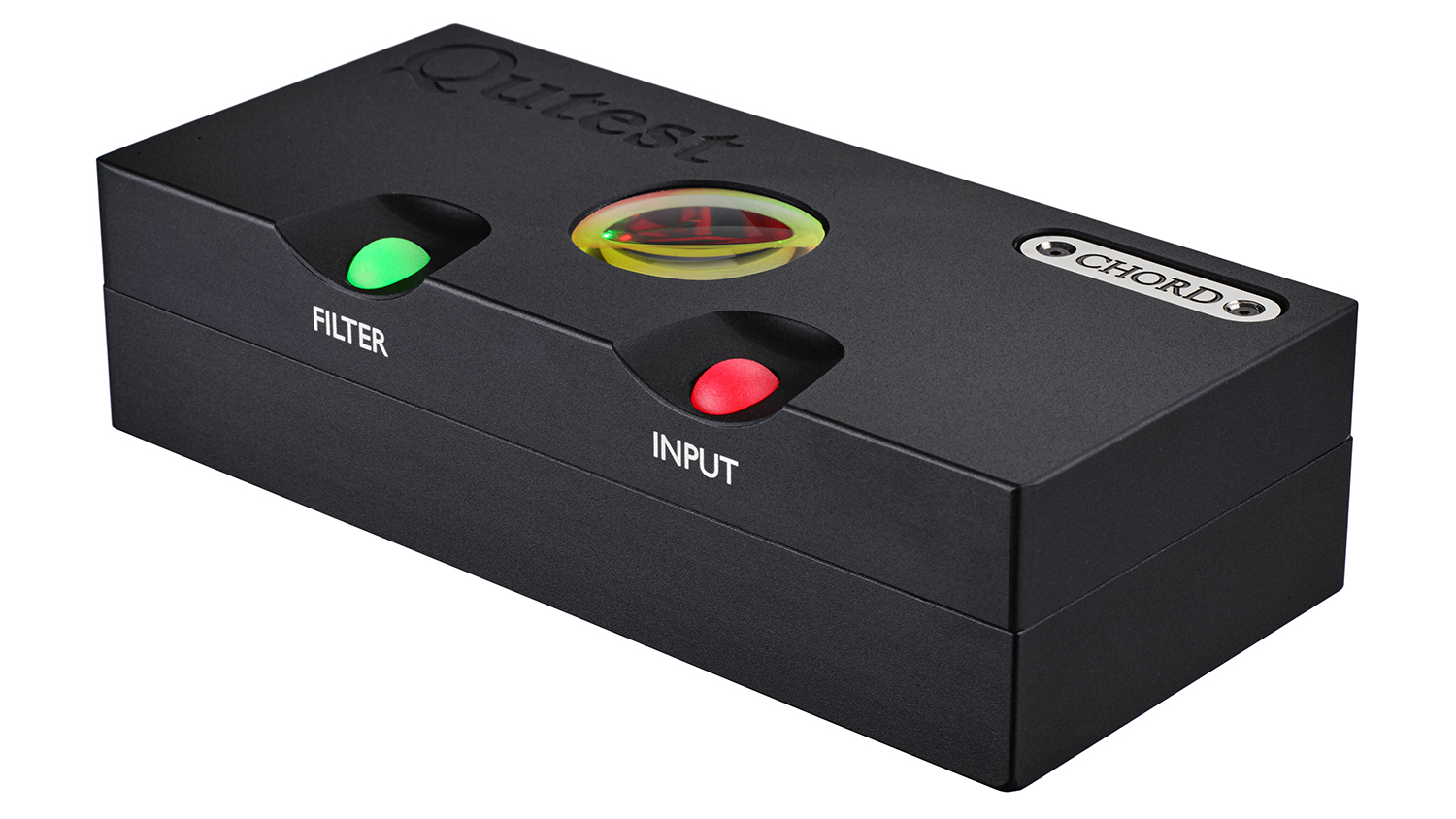
Specifications
Reasons to buy
Reasons to avoid
Given there's no Bluetooth connectivity or headphone amplifier onboard, the Qutest’s sole purpose is to be the digital-to-analogue bridge between your digital source and amplifier. (It's the only one of this type on this page.) And it does the job brilliantly.
It's the product that lesser rivals look up to at this price point. The multi-award-winning DAC delivers a crisp, clean and concise sound, with Chord's now familiar neutral tonal balance. It takes the performance of its 2Qute predecessor and goes far beyond it, offering greater nuance, texture and space. "Notes have crisper, more distinct leading edges, carry warmth and texture in abundance, and never decay prematurely – even when forthcoming notes tumble over the top," we penned in our five-star Qutest review.
As with all decent hi-fi gear, it'll take a bit of running in time before the Qutest really starts to sing. But when it does you're in for a treat: songs are imbued with a great sense of scope, and there's warmth and texture in abundance.
The Qutest boasts Chord's trademark colour-denoting buttons which tell you which source it's drawing on: they glow white for USB-Type-B (capable of accepting 32-bit/768kHz PCM/DSD512); yellow for the first BNC coaxial and red for the second (24-bit/384kHz); and green for the optical (24-bit/192kHz/DSD64).
Quirky, sure, but undoubtedly talented and the easiest recommendation we can make for anybody who is looking to upgrade their digital hi-fi system and can afford this machine.
Read our full Chord Qutest review
The best budget portable dac
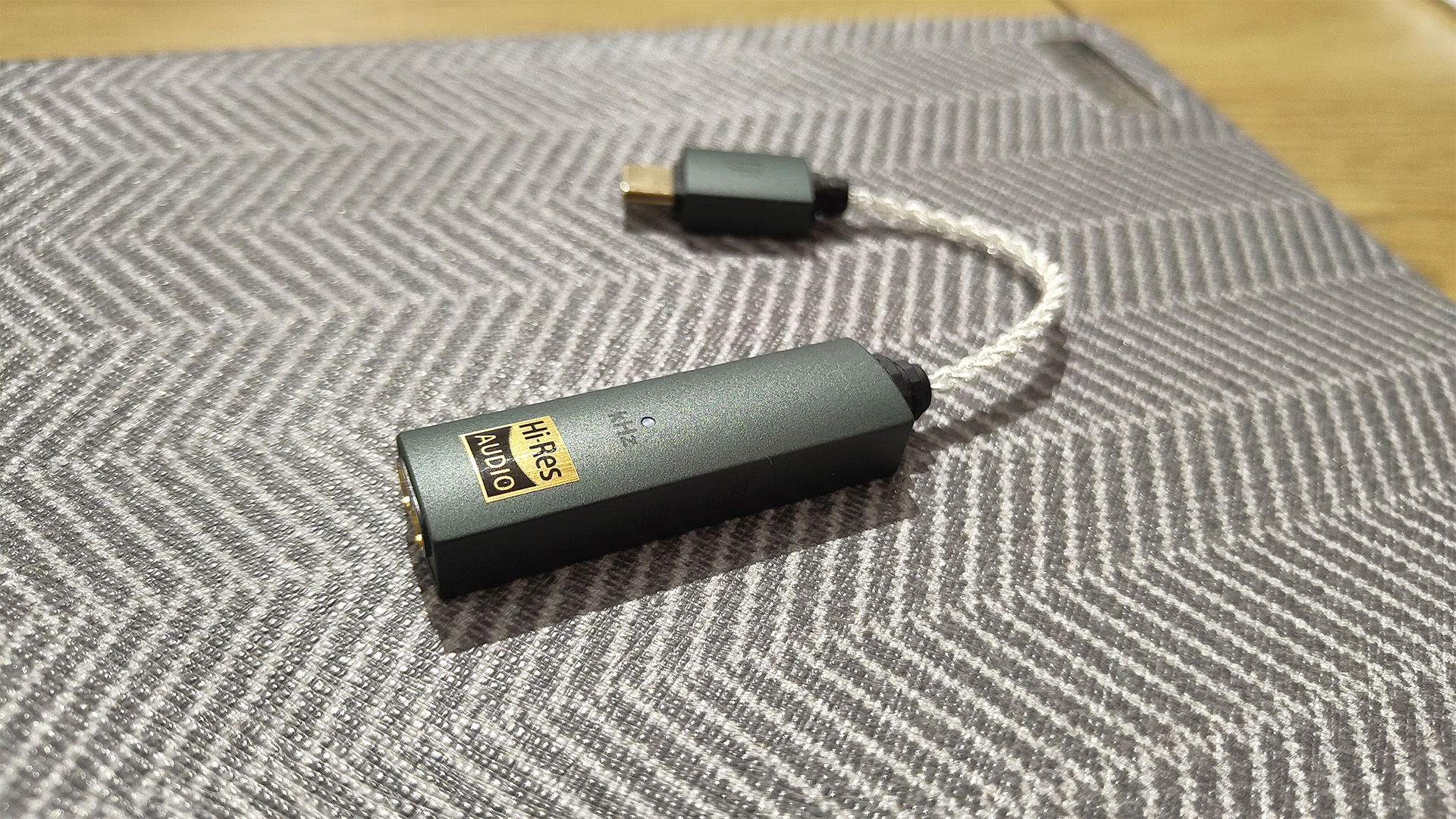
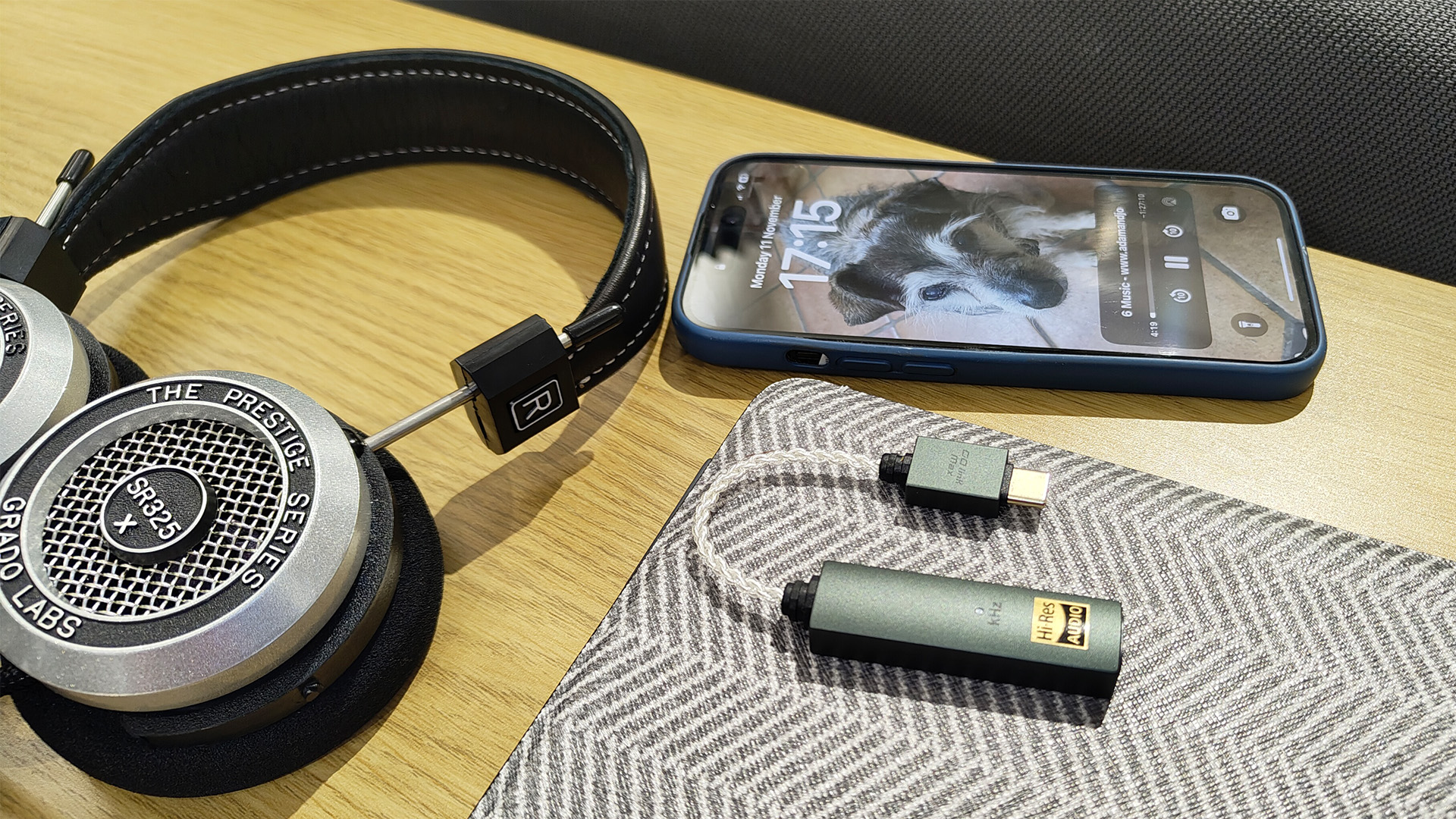
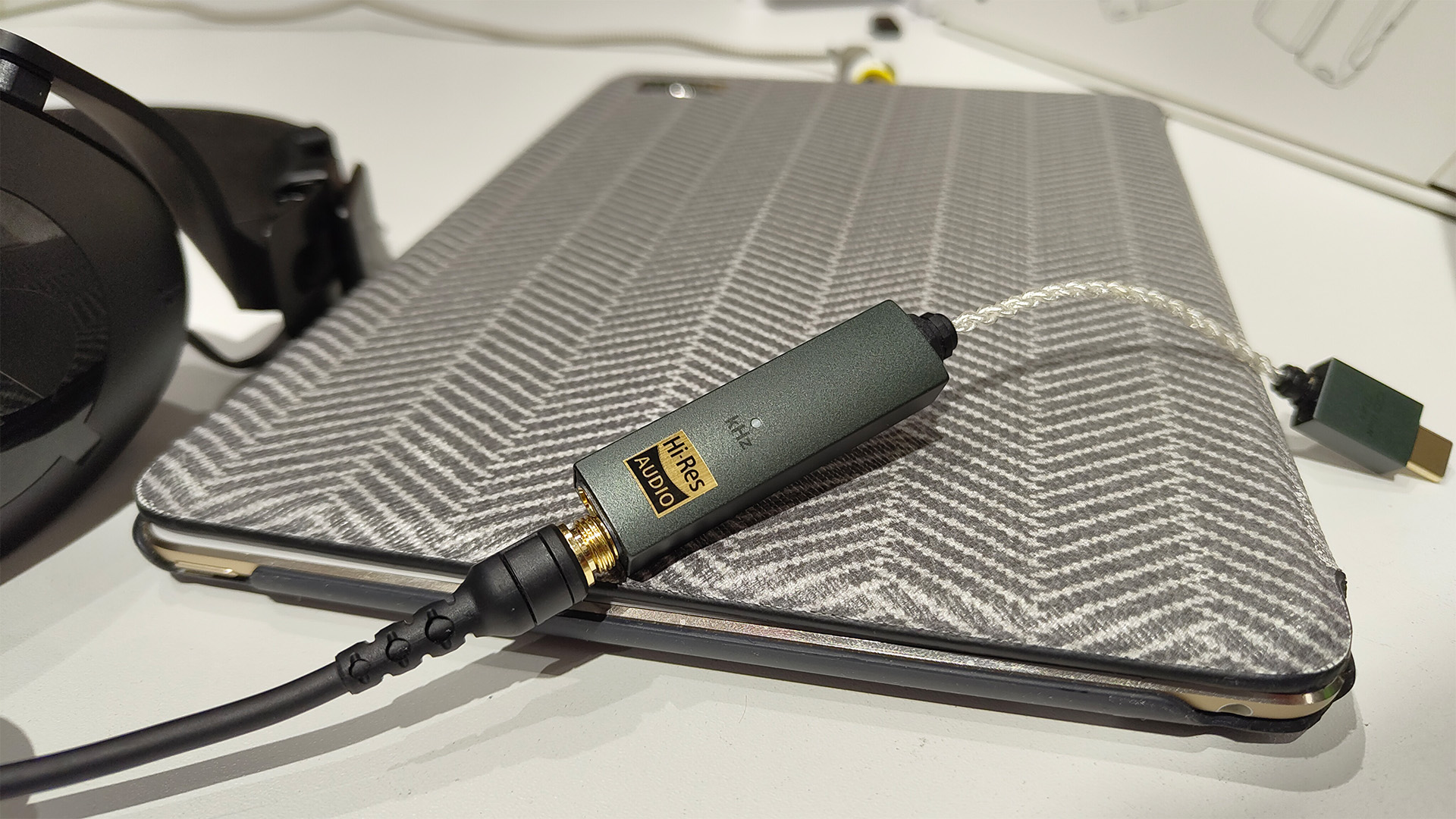
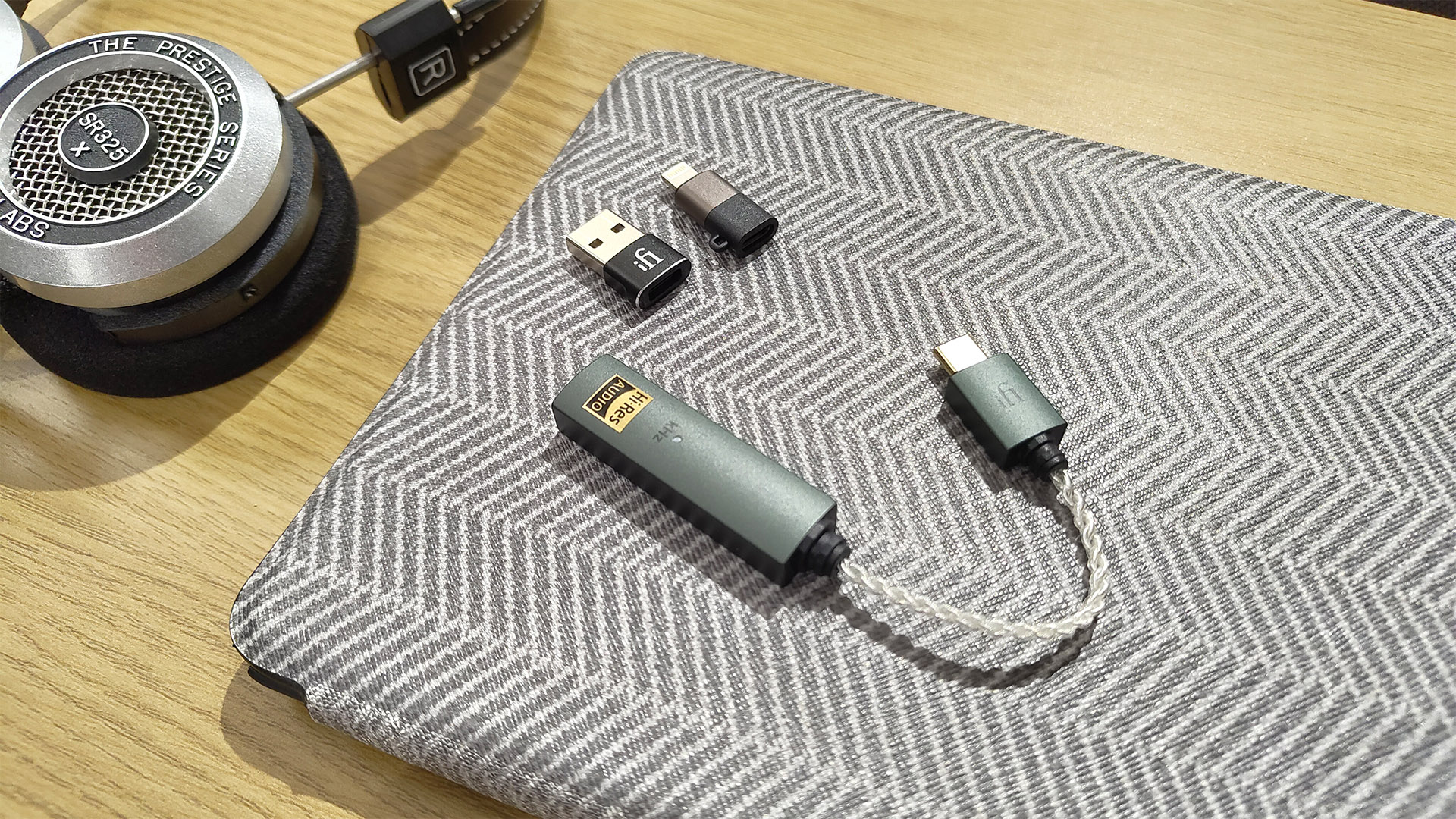
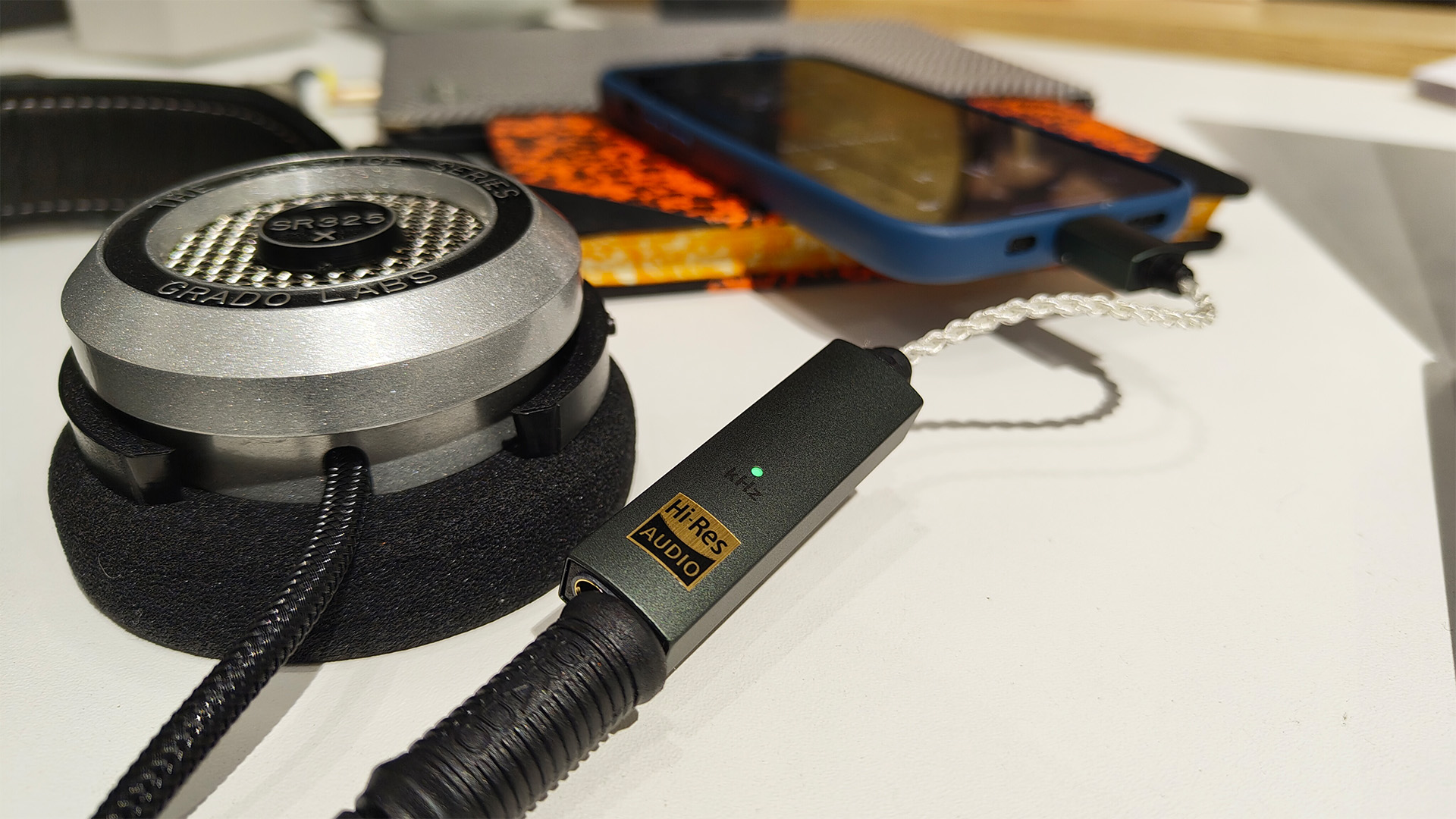
Specifications
Reasons to buy
Reasons to avoid
The Go Link Max is a supercharged version of the Go Link we awarded five stars to a couple of years ago. The small price difference between the two comes in part thanks to the Max’s inclusion of a 4.4mm balanced headphone output for use with balanced headphones, complementing the standard (unbalanced) 3.5mm one.
There isn’t much difference in how much detail resolution they deliver (which is a lot more than your computer or phone will dig up), but they do sound slightly different in character, and which one you prefer will likely come down to your preference. In our five-star Go Link Max review, our expert test team said: "The standard Go Link grants the tune more nimbleness and clarity while revealing the older model’s superior ability with vocals. For injecting the right tunes with a good deal of meaty muscle, especially at the lower end, the newer Max does dial things up a notch, but we concede that some listeners may prefer the more affordable Go Link’s purer, cleaner sonic personality."
The Go Link Max is in every way a practical, portable design that is easy to carry around or keep at your desk. It consists of the main (small) DAC unit and a built-in USB-C plug connected by a short woven cable, plus two handy adapters in the box – Lightning and USB-A – so you won’t miss out if you’re using, say, an older iPhone or laptop. It supports hi-res PCM and DSD files, too. And it can deliver up to 100mW of power (single-ended) into a 32-ohm electrical load, rising to 241mW out of the balanced output, which should be enough to drive more power-hungry headphones.
It's another great portable package from iFi, who is on a roll with its affordable DACs. If you purely want a DAC for desktop (not on-the-go) use, check out the company's Zen DAC V2 below. Alternatively, if you have a bigger budget, the superior-sounding AudioQuest Dragonfly Cobalt further down this page is also worth considering.
Read our full iFi Go Link Max review
The best premium portable DAC
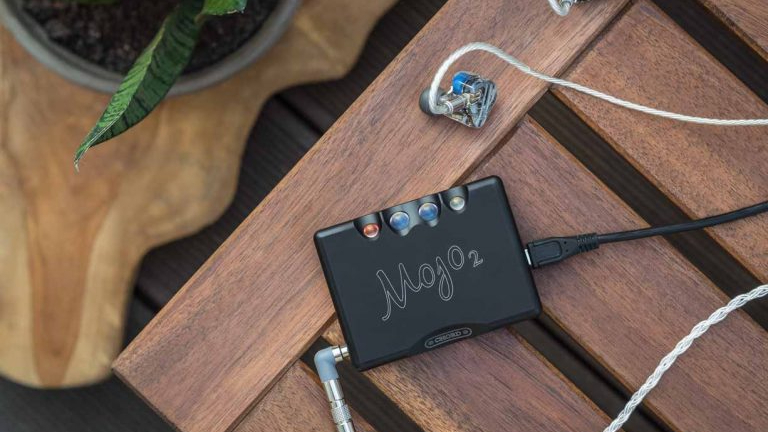
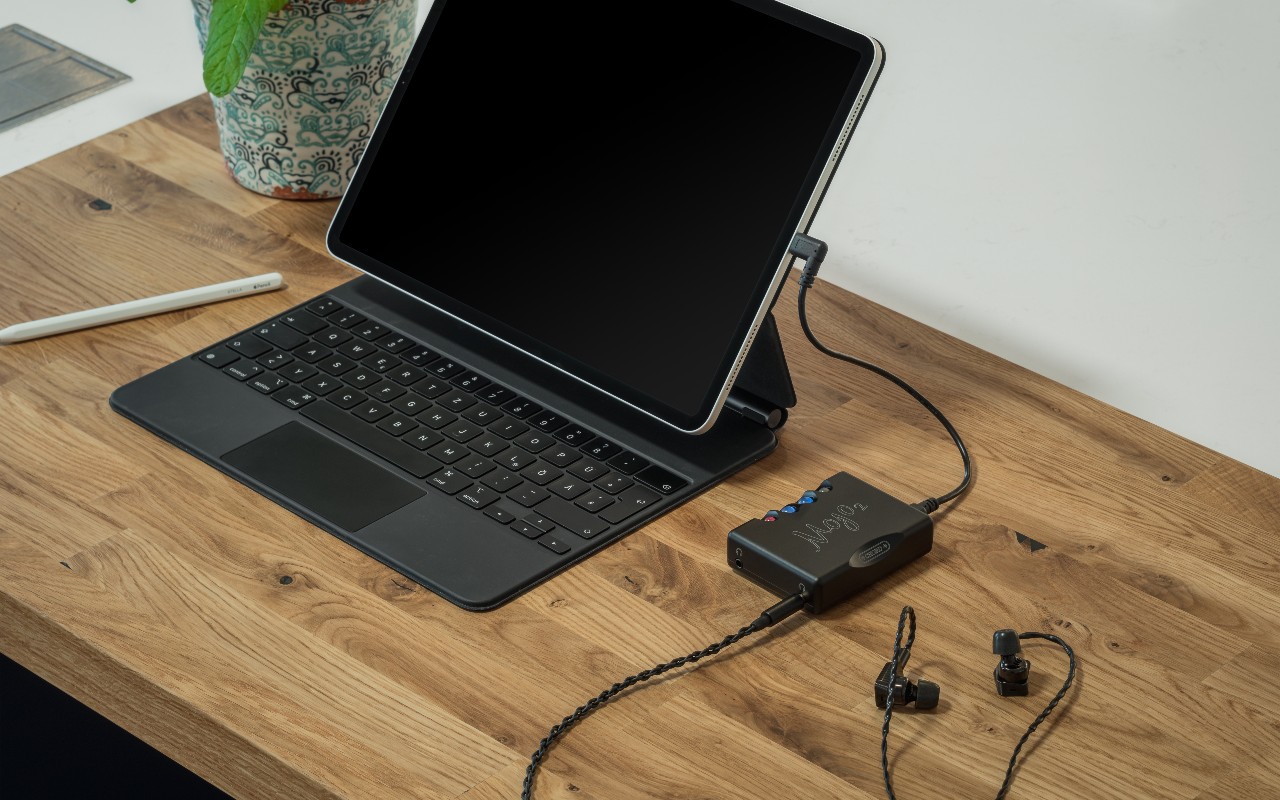
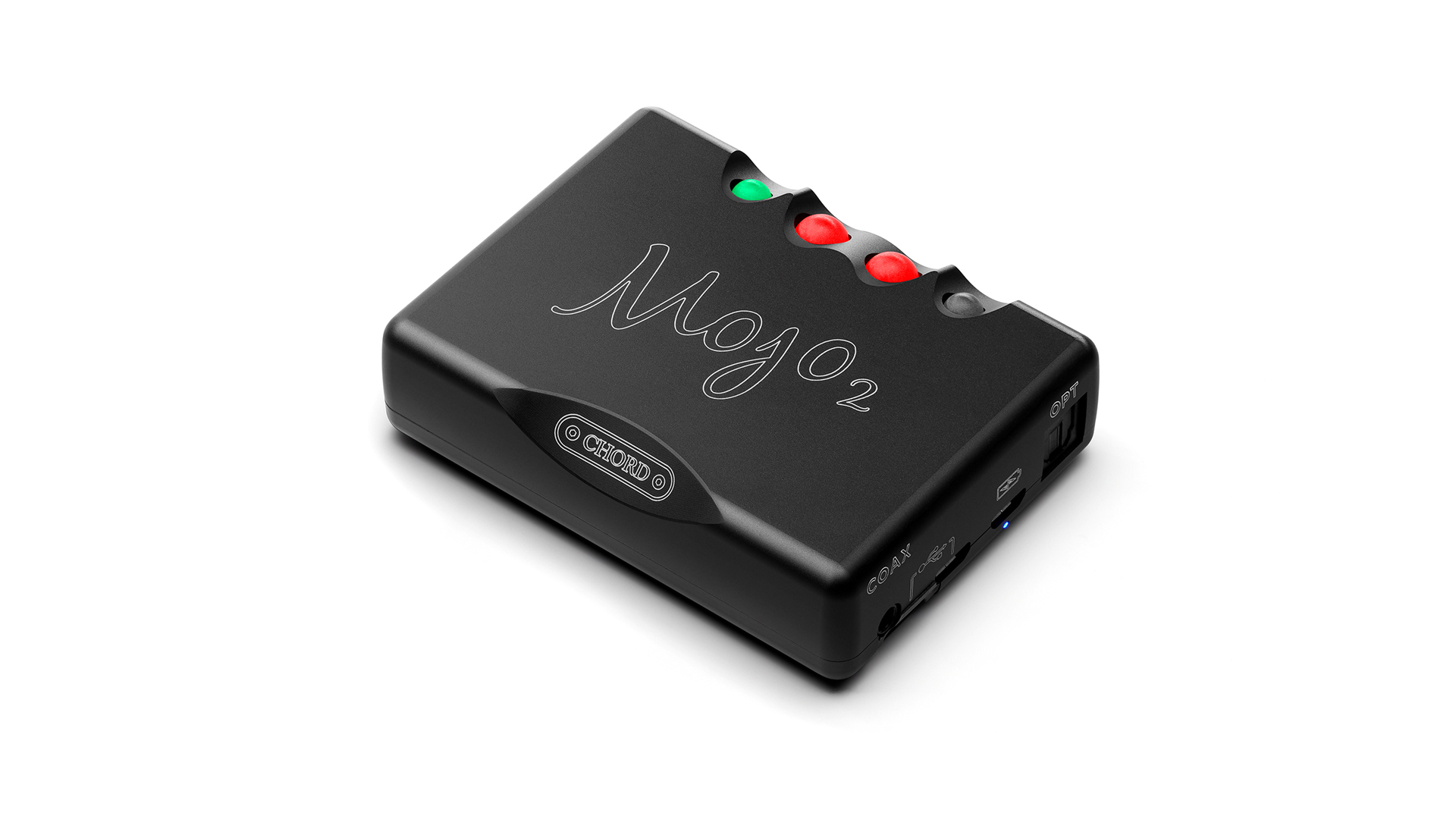

Specifications
Reasons to buy
Reasons to avoid
The fittingly named Mojo 2 is the long-anticipated, re-engineered replacement to the 2015-released original Mojo, which burst onto the scene as a real benchmark-setting game-changer in the then-fledgling world of portable DACs/headphone amps. And while those familiar with Chord’s most affordable product will see from the accompanying image that the aesthetic hasn’t exactly been overhauled for the sequel, significant progress has been made elsewhere to protect its position as the pinnacle of portable DACs.
To quote our five-star Mojo 2 review, "we aren’t exaggerating in saying that Chord has advanced the Mojo in pretty much every sonic area. The Mojo’s soundstage has been opened up for the sequel and that extra depth and dimension has been filled with greater resolution that is not only unmistakably present thanks to a big boost in clarity but also more precisely placed."
While from a performance point of view, the multi-Award-winning Mojo 2 can just as confidently raise a hi-fi system’s game too, some of those looking for a system boost might reasonably prefer a dedicated system alternative with more suitable connections, such as the Cambridge Audio DacMagic 200M. iFi also offers a cheaper option with its GO Blu, which has the bonus of a Bluetooth connection between it and the source. But know that the Mojo 2 is undoubtedly the better performer.
For those who are after a primarily portable or desktop DAC solution in this price region, and cannot triple their budget to Chord Hugo 2 (below) territory, we believe the decision to Mojo 2 or not to Mojo 2 is far easier. And what about existing Mojo owners? Honestly, Chord has left us no choice but to recommend the upgrade.
Read our full Chord Mojo 2 review

You might have realised that Chord Electronics DACs represent half of the picks on this list, and for good reason – the British digital audio specialist has set the bar high at many price points. The Chord Mojo is its entry-level DAC, and while its compact, portable design is quirky to use and has a relatively high price, its performance really is superb – not a million miles from that of the much more expensive (and excellent) Chord Hugo 2, I must say. I love using it for longer travels – on flights, for example – and I'd recommend making the most out of it by pairing it with high-end audiophile headphones if you can.
The best budget desktop DAC
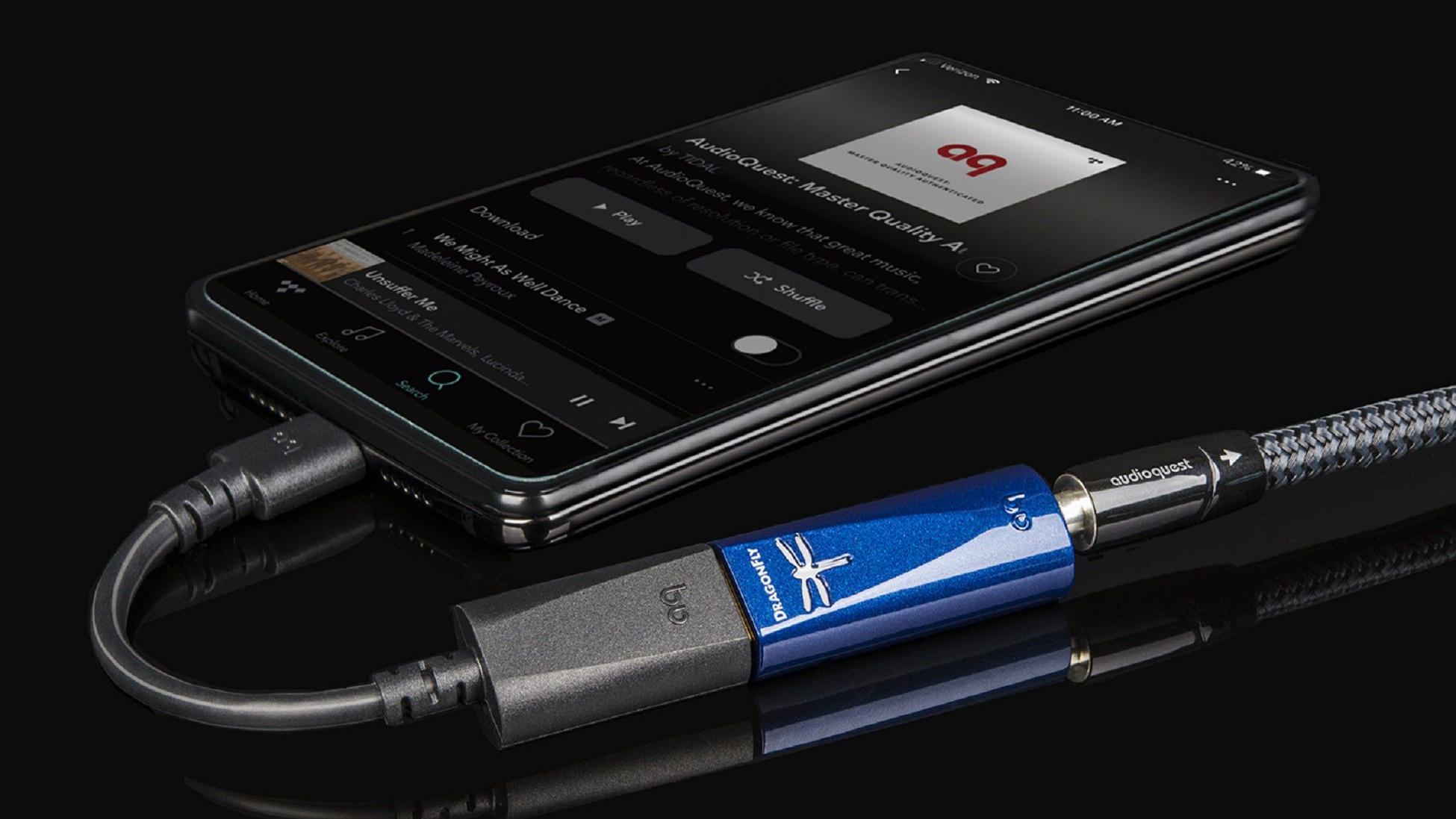
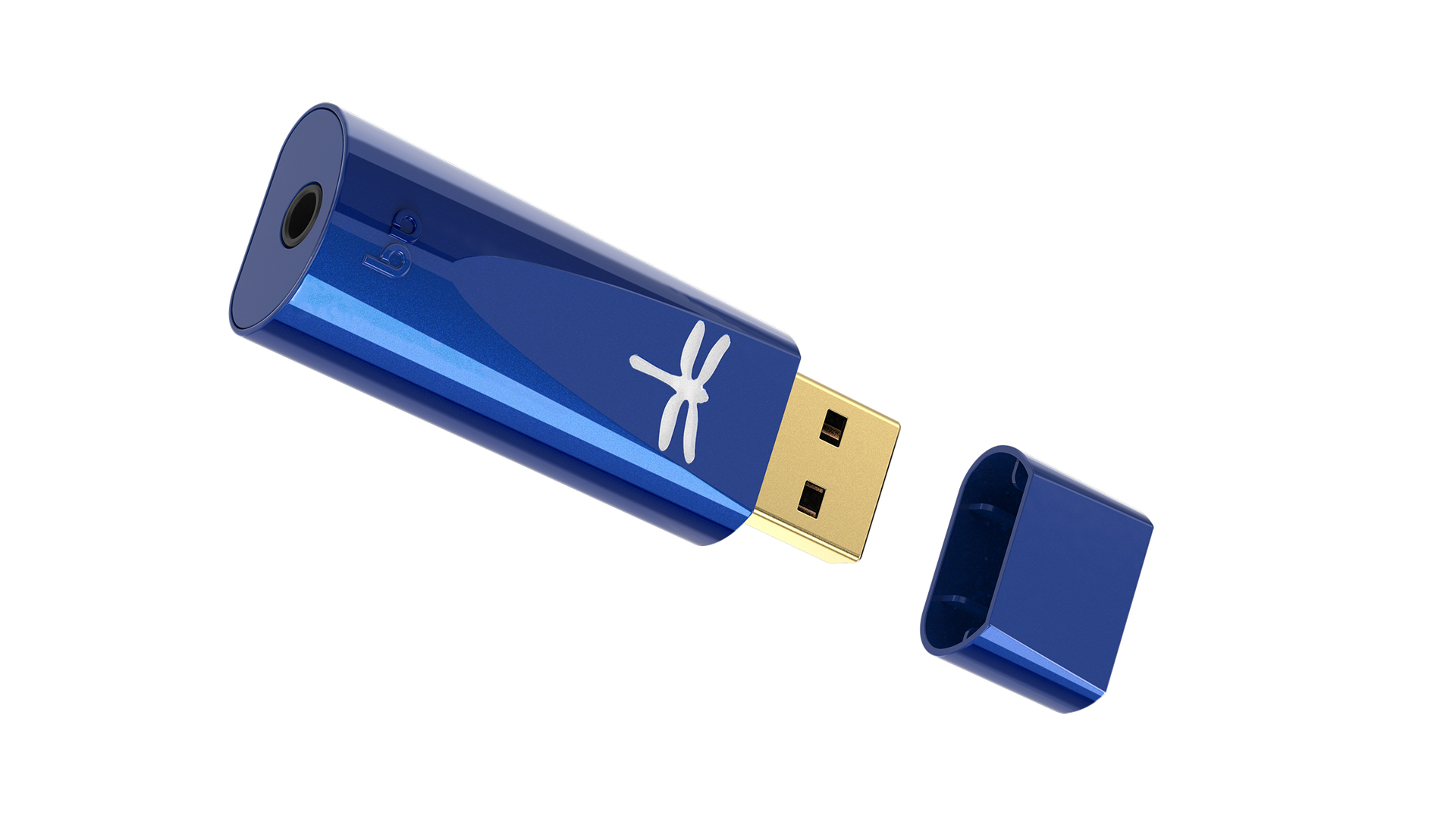
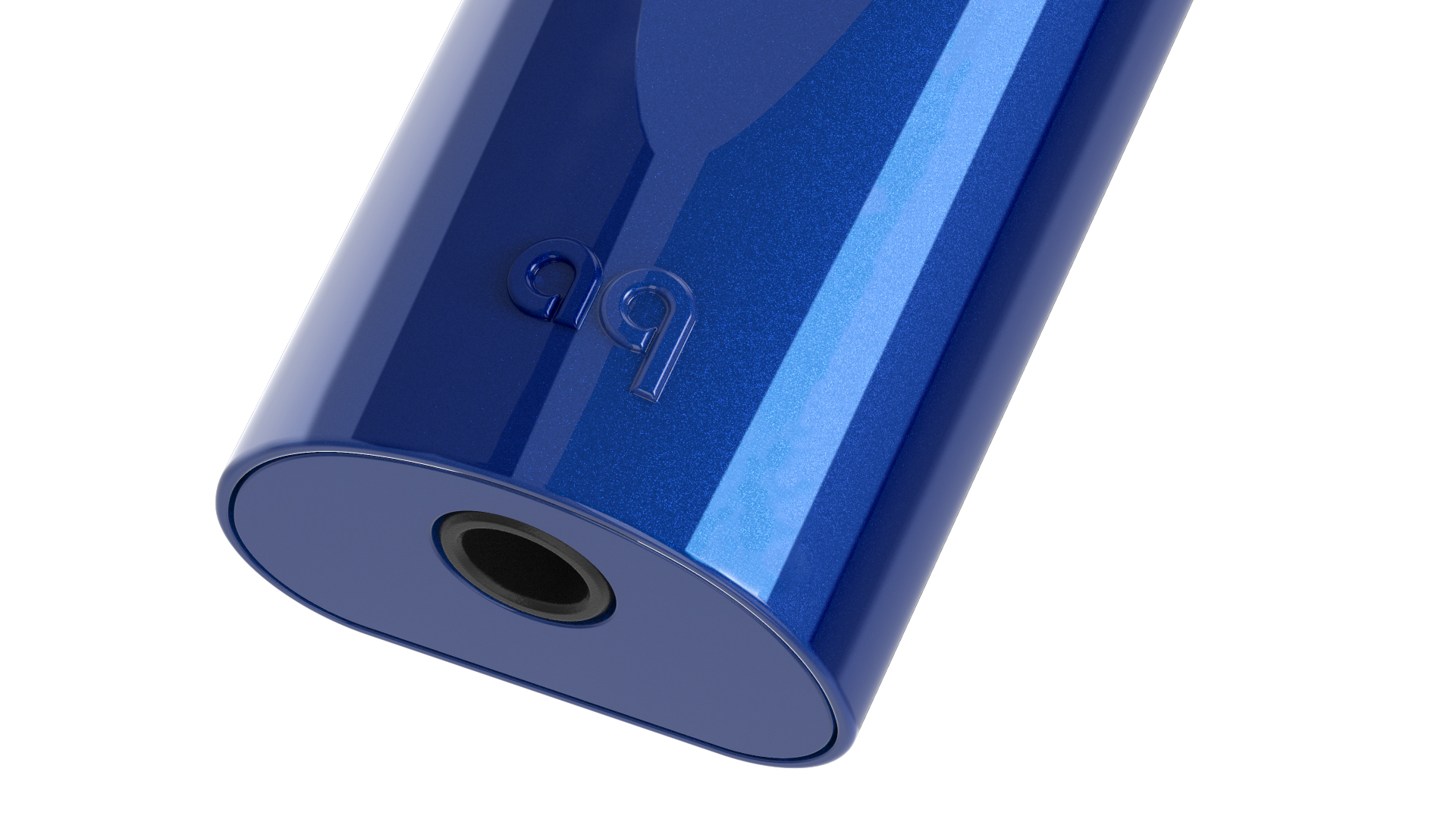
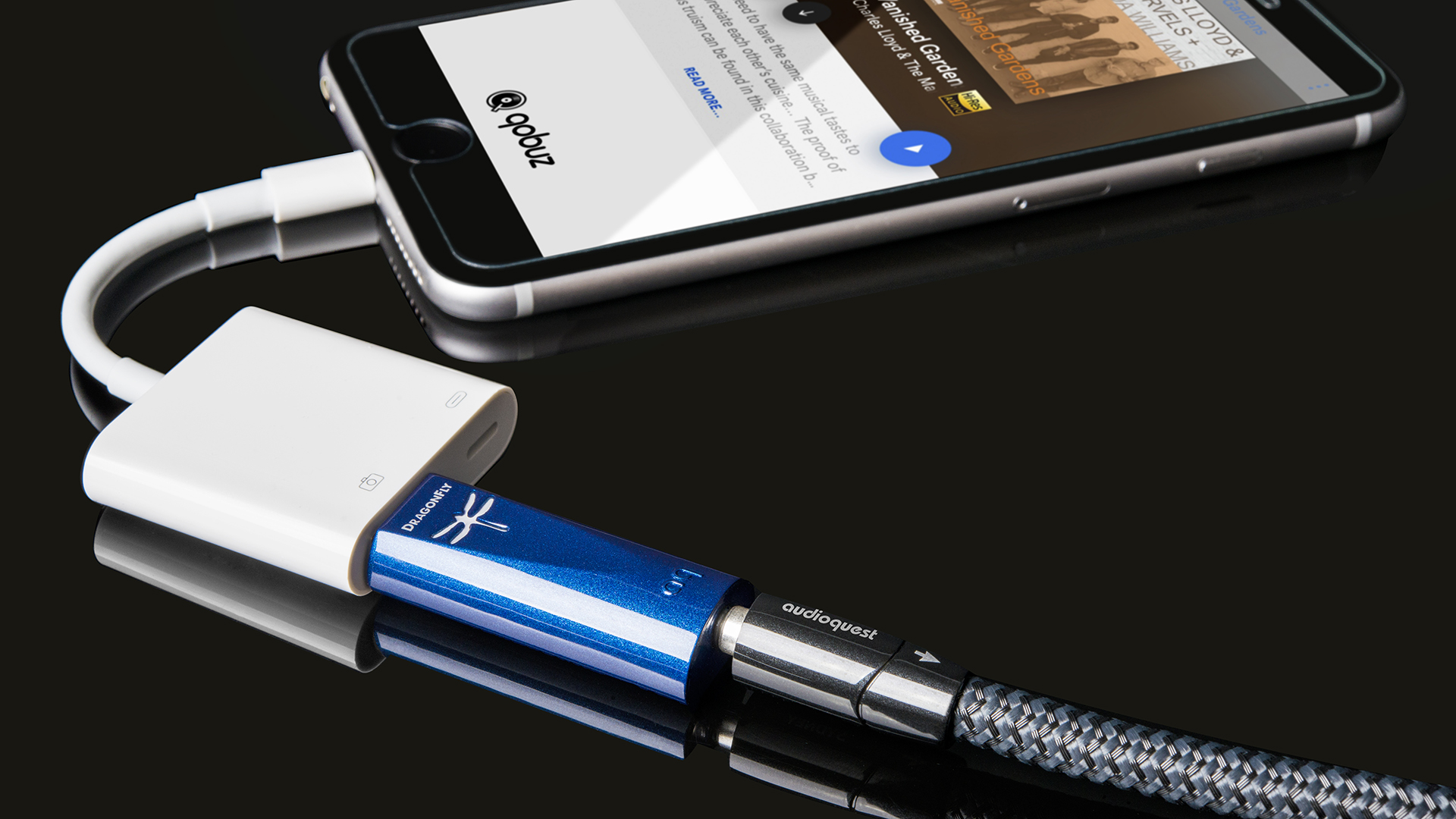
Specifications
Reasons to buy
Reasons to avoid
Looking for a compact sound-booster that is just at home on your desktop as it is in your pocket? Then you should try the latest instalment in AudioQuest's line of portable DACs – the DragonFly Cobalt. While it's also the most expensive of AudioQuest's DragonFlys (the most affordable is the five-star DragonFly Black; the middle model is the five-star DragonFly Red), it is also the best value of the trio and therefore most highly recommendable.
The iFi Zen DAC V2 used to sit in this spot as a more traditional desktop DAC owing to its more substantial build and connections, and the fact it is main-powered (the AudioQuest takes power from the device it's connected to). But it is now end of life and its successor, the DAC V3, while very good (and on our Also Consider list), doesn't sound as good as the similarly priced DragonFly Cobalt.
The established and multi-Award-winning AudioQuest resembles a UBS stick/key and plugs straight into a laptop or PC's USB-A socket, or to a phone via a USB-A-to-USB-C (or -Lightning) dongle adapter. It boasts a more advanced DAC chip than the model-down DraongFly Red, plus a new microprocessor that draws less current and bumps up the DAC's processing speed.
Yes, it costs around a little more, but it does take performance to another level. The Cobalt does wonders in cleaning up our laptop’s performance, no matter what kind of file we feed it or whether it’s streaming from YouTube, Spotify, Tidal or playing from our own hi-res library. "Lines are indelibly drawn round the edges of each instrument, with granular detail on offer to complement the cleanliness and military precision," reads our five-star DragonFly Cobalt review. When comparing the better-featured iFi Zen DAC V3 to the Cobalt, our test team said that "it lacks the verve, dynamic punch and rhythmic drive of the Audioquest, preferring to offer the listener a more sanitised version of events."
Once attached to your device and selected as a means of audio output, the DAC’s LED will shine one of six colours to indicate the sampling rate: red for standby, green for 44.1kHz, blue for 48kHz, yellow for 88.2 kHz, light blue for 96kHz or purple when decoding MQA. It's a great feature for at-a-glance checking.
Read our full AudioQuest DragonFly Cobalt review
The best premium desktop DAC
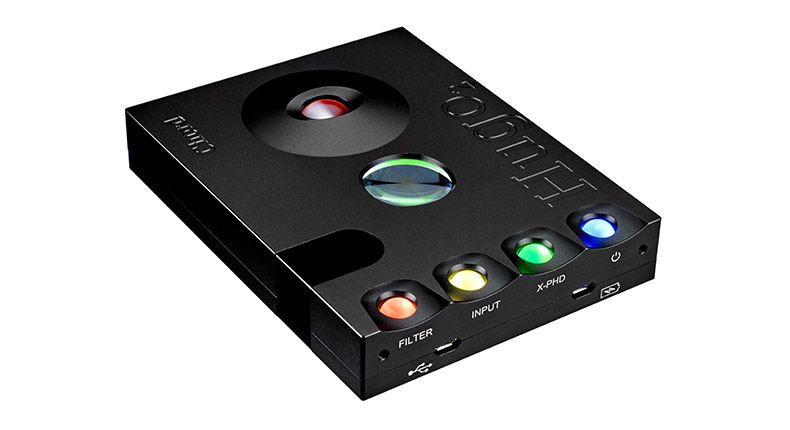
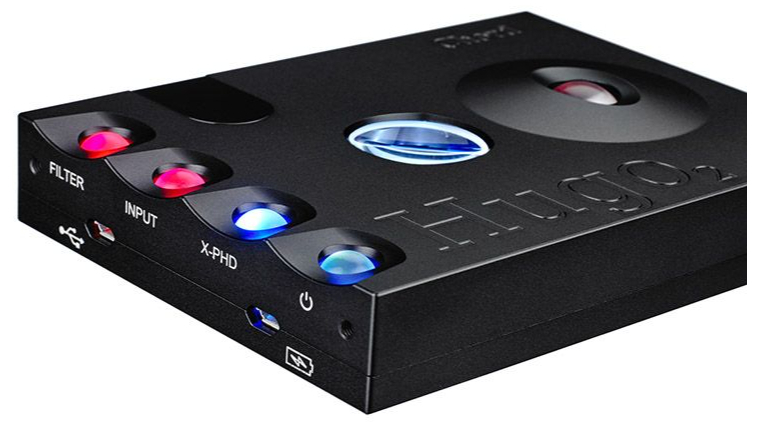
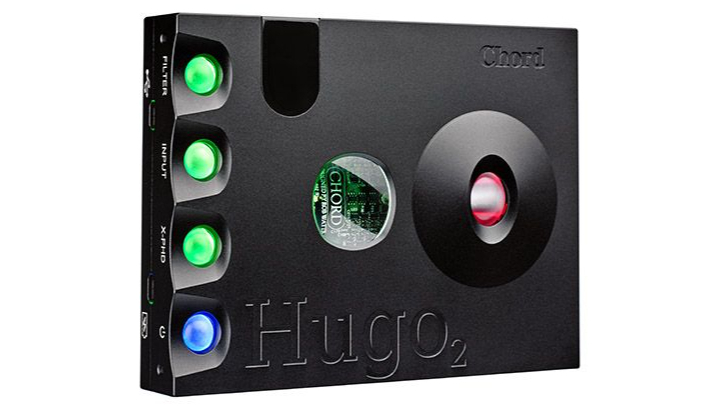
Specifications
Reasons to buy
Reasons to avoid
The superb Hugo 2 features all the inputs and outputs you could realistically require from a product of this type, including digital optical, coaxial and mini-USB. Music can also be fed to a pair of wireless headphones via aptX Bluetooth. Both 3.5mm and 6.3mm headphone outputs also feature, plus a pair of stereo RCAs to connect an amplifier. So to say it's a versatile piece of kit would be an understatement.
To say it's a decent-sounding one would be too. The Hugo 2 is a smooth, neutral listen – it doesn’t overstate, yet it doesn’t underplay. For some DACs, that could be playing it safe, but the Hugo 2 still manages to keep things interesting, creating a holistic sound: it arranges the pieces into a convincing whole where the bass is balanced against treble in the most unforced and crystal-clear manner. But its biggest talent? Timing. As we noted in our five-star Chord Hugo 2 review, "timing is perhaps Hugo 2’s strongest suit of all – it brings absolutely believable unity to ensemble music". It has the dynamic expression and insight to outmuscle excellent rivals like the SPL Diamond and NuPrime DAC-9X.
The Cambridge Audio DacMagic 200M and Chord Mojo 2 (above) are options if your budget is smaller, and you should certainly consider the next-model-up Chord Hugo TT2 if it's bigger, but there isn’t another DAC around at anywhere near this sort of price that's able to communicate so well and so effortlessly. And that's why it's a current What Hi-Fi? Award winner. We like it a lot and reckon this is the most DAC most people will ever need.
Read our full Chord Hugo 2 review
The best high-end DAC
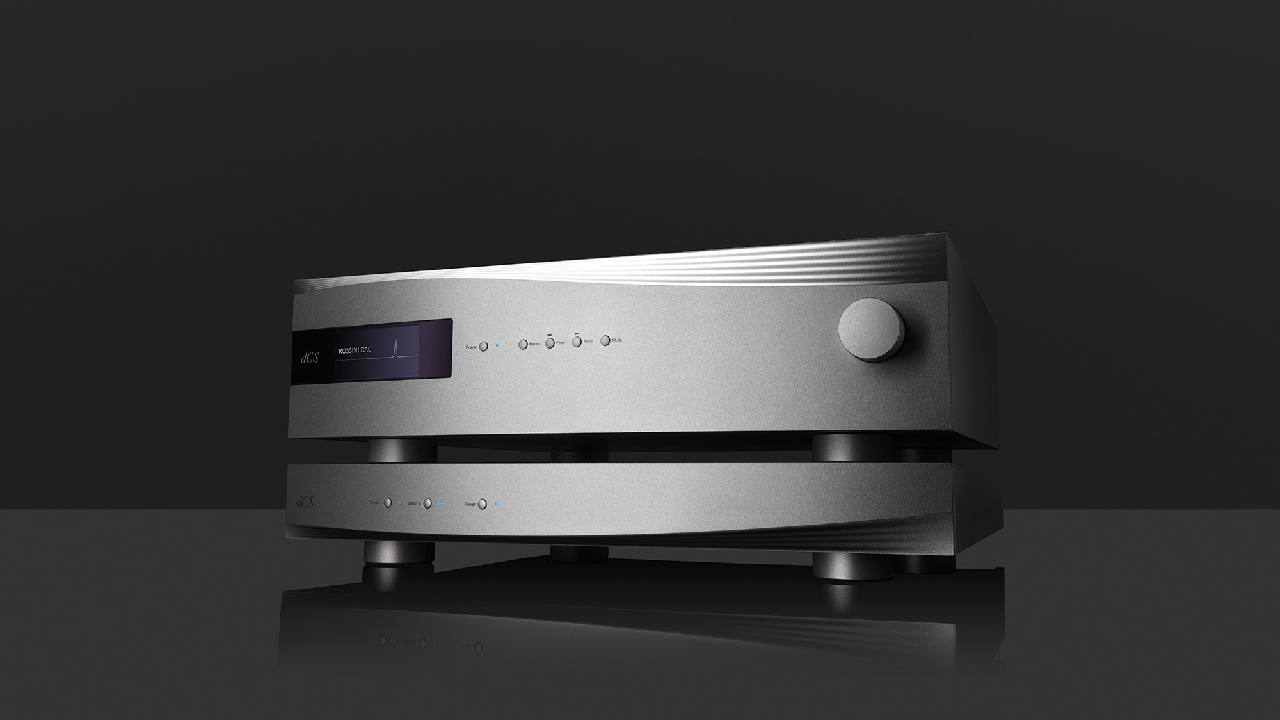
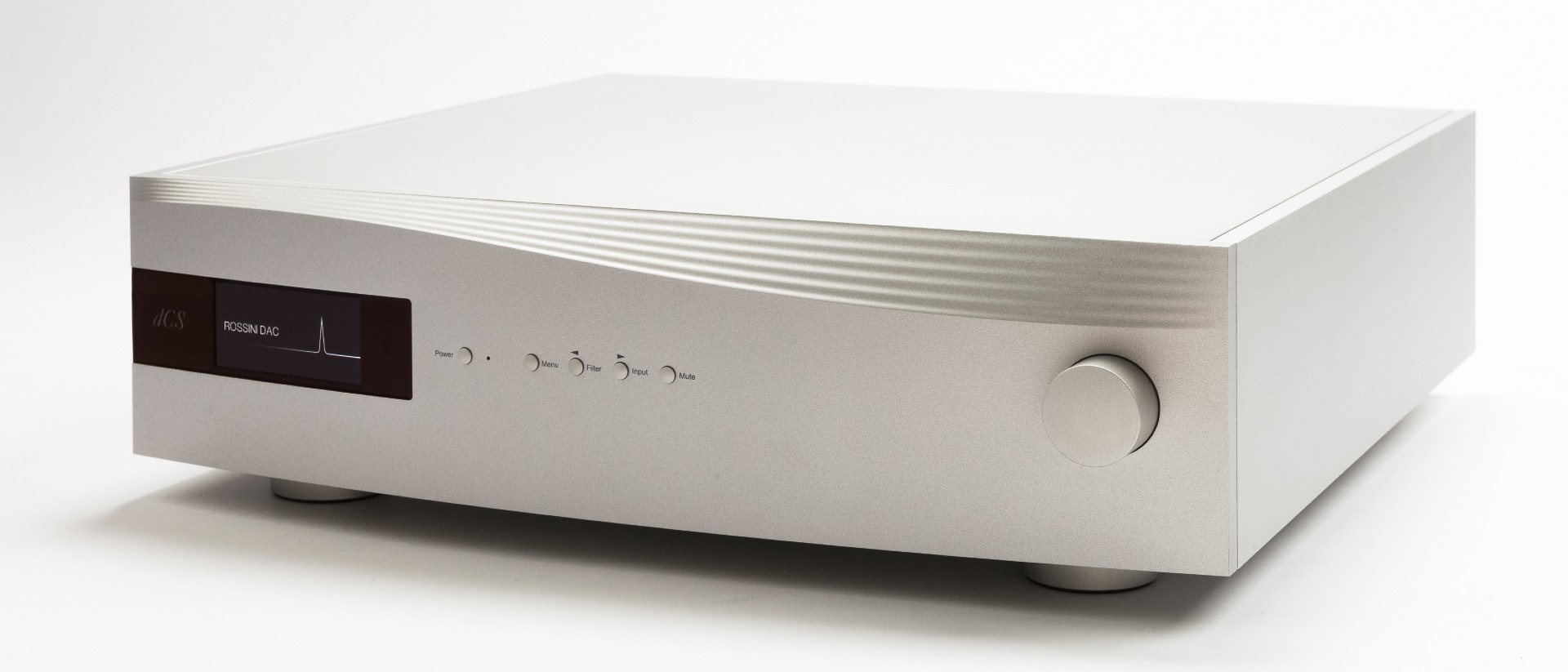
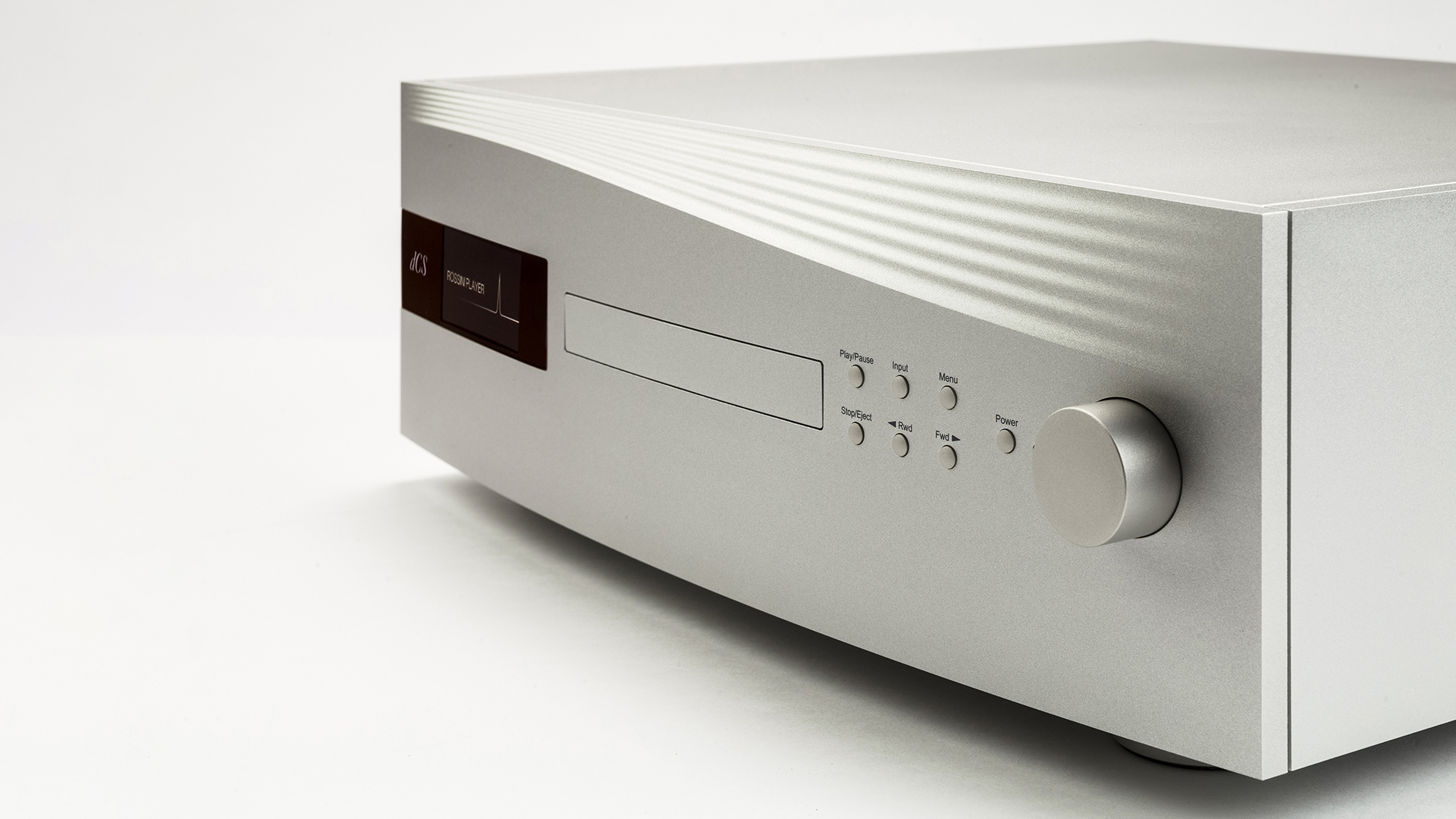
Specifications
Reasons to buy
Reasons to avoid
You've reached the most capable digital-to-analogue converter we’ve ever reviewed, which may not be surprising considering the price of this thing – £26,775 / $32,800 / AU$46,995.
There is no denying that the dCS Rossini Apex DAC is hugely expensive, and in these financially turbulent times it is easy to dismiss such products simply because they cost so much. Yet, judge this DAC by performance and it’s hard to imagine how it can be bettered. The Rossini Apex DAC delivers transparency of the highest order and swept us away with the musical experience time and time again during our testing. In our five-star Rossini Apex DAC review, we said: "We’re impressed by the authority and scale of the Rossini’s presentation. It sounds solid and full-bodied in a way that digital products very rarely do. We also admire the stability, focus and layered nature of the dCS’s stereo imaging."
The Rossini’s connectivity is very good too. You have USB in both Type A and B forms along with coax, BNC coax, optical and a pair of AES/EBUs. There are no analogue inputs of course, but there are outputs in both single-ended RCA and Balanced XLR flavours. Of course, any product that sells for as much as the Rossini has to be superbly made – and it is.
Chord's DAVE and dCS's Lina are other high-end options to consider if you can't quite stretch to the Rossini, while Nagra's HD DAC/MPS will also save you a few grand. But if you’re lucky enough to even contemplate buying at this level, we envy you.
Read our full dCS Rossini Apex DAC review
How to choose the best DAC for you
Without a DAC your digital music collection is nothing but a sizeable collection of “0s and 1s” that makes sense only within the digital domain, so they play an instrumental part in making digital music worthwhile for many of us. The right dedicated DAC will give your everyday digital device or more sophisticated digital source the sonic boost it could well need, but there are different types to consider depending on your device and user requirements.
For your phone?
If you're looking to boost your mobile sound on the go, a compact USB-C dongle (with a Lightning-to-USB-C adapter, if you have an iPhone 14 or older) will do the trick nicely and discreetly as the middleman between your phone and wired headphones. Most are wired to both your headphones and source, while some (like the iFi Go Blu) can connect to a source wirelessly over Bluetooth and thus take one wire out of the equation. These typically draw power from your connected source device.
For your laptop/computer?
Then there are desktop and USB-stick DACs, both typically affordable and easy-to-use solutions to maximise your laptop or PC's sound, or again be used with a phone (via a dongle adapter, if necessary).
For your speaker-fronted system?
There are also more serious DACs that are designed to slot into your home hi-fi system to improve the quality of a digital source. Most are geared towards headphone listening and therefore have headphone amplifiers built in, though, like the Chord Qutest listed above, some are headphone-socket-less and therefore strictly designed to sit between a source and an amplifier/pair of active speakers.
File support
Most DACs nowadays support a wide range of hi-res PCM files – FLACs, for example, often up to 32-bit – but further compatibility should be considered if you wish to play or stream more niche music formats such as DSD.
Connections
In terms of connections, the simpler portable/desktop ones usually have single USB (Type A or C) inputs, although some offer additional digital inputs as well as balanced headphone connections. Whether you would benefit from them depends on your source and headphone type.
Also consider
- iFi DAC Zen V3: Successor to the Award-winning Zen V2, the new Zen remains a pleasing product, with a decent combination of performance, features and build quality for the money. The simpler AudioQuest DragonFly Cobalt in our list sounds a bit better, though.
- NuPrime DAC-9X: While not quite as transparent as the class-leading Chords, this high-end DAC/preamp/headphone amp hardly puts a foot wrong – it still sounds terrific, is generous in the connections department and works well in a wide range of systems.
- iFi hip-dac 3: AudioQuest's DragonFly Cobalt edges the rivalry, but it's a very closely fought battle – not something many of the AudioQuest's contenders can claim. This portable DAC is smart, versatile and a pleasure to listen to.
- iFi Go Blu: If you would prefer to cut one of the two wires in your personal setup, specifically the one between your source and DAC, this neat and well-performing iFi DAC can do just that. While you'll still need to plug in your headphones, you can simply Bluetooth music from your phone/laptop to the Go Blu.
How we test DACs
The diversity of DACs, from portable models for phones to component-sized converters for high-end hi-fi systems, means that not all DACs are tested the same way at What Hi-Fi?.
The former kind are lived with and used out and about and at our office desktops, while the latter invariably passes through our state-of-the-art testing facilities in Reading, where our team of experienced, in-house reviewers tests every bit of hi-fi kit that pass through our door.
What Hi-Fi? is all about comparative testing, so we listen to every DAC we review against the current leader in its field to gauge how it compares to the best-in-class competition. We keep What Hi-Fi? Award winners and as many five-star products as we can in our stockrooms so we can always put new products against ones we know and love. We do our best to review as many new models in as many markets as possible, too, to ensure our contextual knowledge is the best it can be.
We ensure we hear every DAC at its optimum – whether it's a portable USB DAC for on-the-go use with a phone, a desktop model ideal for pairing with a laptop, or one designed to slot into a hi-fi system. Depending on the type and budget of the DAC under scrutinty, various partnering headphones and source devices are used with it to guage its performance across both real-world and ideal setups. And we play an eclectic mix of music genres and quality audio files through them. Naturally, we give them plenty of listening time (and, before that, time to run in) too.
All review verdicts are agreed upon by the team as a whole rather than an individual reviewer to eliminate any personal preference and to ensure we're being as thorough as possible. There's no input from PR companies or our sales team when it comes to the verdict, with What Hi-Fi? proud of having delivered honest, unbiased reviews for decades.
You can read more about how we test and review products on What Hi-Fi? here.
Recent updates
- March 2025: We have removed the iFi Zen DAC V2 owing to its limited, end-of-life availability, while its just-tested successor – the four-star Zen DAC V3 – gets a spot in our Also Consider list below.
- January 2025: We've added the newly reviewed, five-star iFi Go Link Max to our list as our favourite budget portable DAC due to its excellent performance and value.
- November 2024: Our three newly crowned What Hi-Fi? Award 2024 winners have been labelled as such, though they are repeat winners from last year as no DACs submitted by manufacturers during our Awards judging season dethroned them.
- September 2024: We have added the five-star iFi Go Blu to our Also Consider list to give you the option of a DAC that can accept music over Bluetooth and therefore remove one wire from the setup equation.
- June 2024: No new entries, though watch this space for our upcoming iFi Zen DAC V3 review. The British company's just-announced Zen Blue 3 DAC also looks interesting, promising a 'world's first' for wireless audio quality from a DAC.
- May 2024: We tested the SPL Diamond and iFi hip-dac 3 this month, but while both are very good, they don't dethrone the Chord Hugo 2 and AudioQuest Cobalt respectively.
- January 2024: We added 'also consider' options to the bottom of each entry to give you more context and choice, as well as an FAQ section (below) to answer any queries you may have on digital-to-analogue converters.
- October 2023: We flagged our newly crowned What Hi-Fi? Award 2023 winners, which make up two-thirds of this buying guide list.
F.A.Q.
What does 'DAC' stand for?
'DAC' stands for 'digital-to-analogue converter', so we're rather glad the device has a commonly used acronym. It's a does-what-it-says-on-the-tin name, considering the devices convert digital audio signals to analogue ones so that they can be understood by speakers and headphones.
What is a DAC?
Built into every digital audio device, such as computers, tablets, music streamers and smartphones, DACs are fundamental in listening to digital music. A DAC chip converts digital information (essentially a sizeable collection of “0s and 1s”) into analogue signals that are intelligible to the likes of speakers and headphones. You can read about how this is done in our comprehensive What is a DAC? explainer.
But DAC chips are not born equal, nor are their implementations standard across digital devices they're found in. They are likely to be inferior in both ways inside everyday do-it-all devices than dedicated DAC devices designed specifically for the task (like those you'll see above), hence why they often make a big difference when it comes to improving sound quality.
Can a DAC be used as a preamp?
Firstly, the roles of a DAC and a preamplifier are different: the former converts digital audio signals to analogue, while the latter boosts (typically weak) signals from a source (a turntable, say) or a DAC before they are fed to a power amplifier or active speakers. However, many dedicated DACs now feature preamp stages and volume-controlled outputs, meaning they can perform both tasks.
That said, the efficiency and effectiveness of a DAC's preamplification duties really will depend on the DAC itself and the rest of the system it's connected to. You may find that the DAC's output signal is too weak, for example, and you won't likely get as much control over level adjustment as you would a separate preamp (or integrated).
Will a DAC improve Spotify?
Connect a decent-quality DAC (like one of those listed above) to your laptop or phone or other digital music source, and you should hear a sonic improvement in the music you're playing through it, whether it's from Spotify or Tidal or locally stored files. However, a DAC can only deal with (convert) the quality of the digital file/stream it is handed, and Spotify's maximum bitrate of 320kbps is rather limited compared to high-resolution streams from many rival services.
So yes, you should hear a positive difference during Spotify playback if you add a good DAC to the equation – so long as (and this is important) your headphones or speakers are transparent enough to communicate what the DAC is doing.
Today's best deals
The latest hi-fi, home cinema and tech news, reviews, buying advice and deals, direct to your inbox.

Becky is a hi-fi, AV and technology journalist, formerly the Managing Editor at What Hi-Fi? and Editor of Australian Hi-Fi and Audio Esoterica magazines. With over twelve years of journalism experience in the hi-fi industry, she has reviewed all manner of audio gear, from budget amplifiers to high-end speakers, and particularly specialises in headphones and head-fi devices.
In her spare time, Becky can often be found running, watching Liverpool FC and horror movies, and hunting for gluten-free cake.
